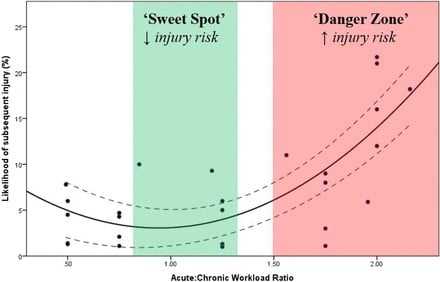Overtraining and the risk of developing musculoskeletal pain
By Graceville Physiotherapist Joni Levine
Overtraining is a term used to describe when someone is exercising at an increased rate compared to their usual levels.
Whilst overtraining can be beneficial in the short-term when professionally monitored and controlled, it also increases the risk of developing musculoskeletal injury and pain.
Symptoms of overtraining include general muscle and joint soreness, fatigue, and reduced concentration. We want our patients to be progressing their exercises in order to maximise their exercise capacity (strength, endurance, flexibility, power, balance etc.), but it is important to consider how to do this safely.
Clinically, we often refer to the “10%” rule in regard to how much a patient can maximally increase their physical activity per week. For example:
1)If someone typically walks 1km a day, they should only increase this to 1.1km maximum per day for the first week, then 1.21km etc.
2)If someone can bench press 50kg, they should only increase this to 55kg maximum.
This rule has its downsides. Firstly, progressing a 5kg dumbbell shoulder press to 5.5kg is not clinically possible. Conversely, progressing a marathon runner’s 30km training run to 33km may be too much. The 10% rule is rather seen as a rough guide and clinical judgement is required to safely progress exercises.
The acute to chronic workload ratio can objectively measure whether someone is overtraining or not, as subjective symptoms such as muscle soreness may not be an accurate reflection of overtraining. To work this out, the clinician utilises an objective exercise measure (e.g. heart rate, distance, weight lifted, rate of intensity of exercise) and multiples this by the time they spent exercising that day.
This is calculated daily and needs to be done for one week to determine the acute workload. The acute workload is the sum of the daily workload calculation divided by 7. The chronic workload is the sum of the daily workload calculation divided by 28. The acute to chronic workload ratio is then the acute workload divided by the chronic workload. As per the graph below, the ”ideal” number should be 0.8 to 1.3. Anything above 1.5 is considered an increased injury risk.

If your patients have seen you to discuss general aches and pains related to exercise, there is a high chance they could be overtraining. We are able to modify their exercise plan to ensure they are not overtraining, as well as provide suitable exercise prescription to ensure their muscles are working optimally. We also provide hands-on treatment, such as massage and joint mobilisations, in combination with other treatment options, such as dry needling, taping and blading, to help reduce their pain.
-
Source:
Gabbett TJ. The training—injury prevention paradox: should athletes be training smarter and harder? British Journal of Sports Medicine 2016;50:273-280.



